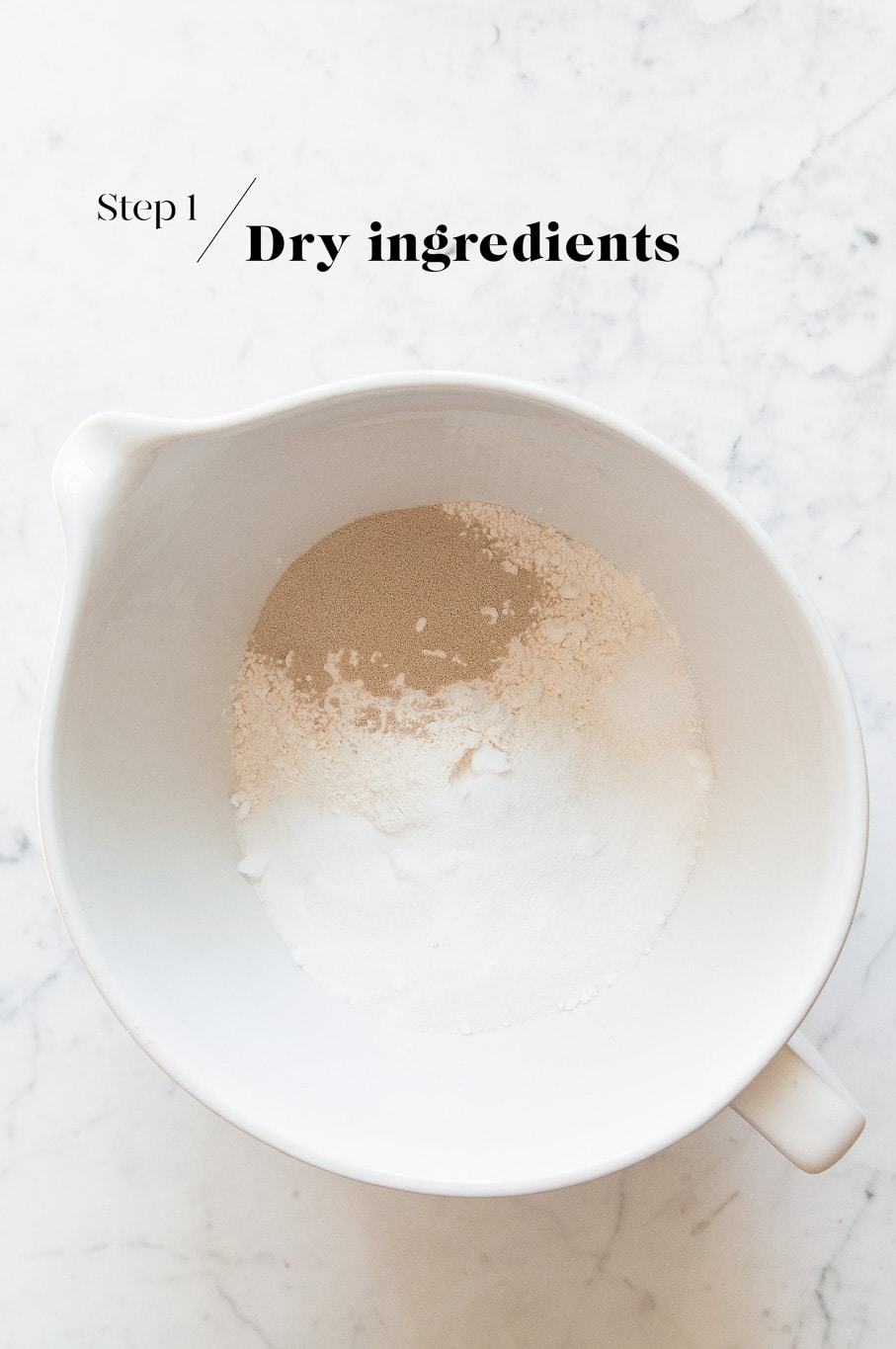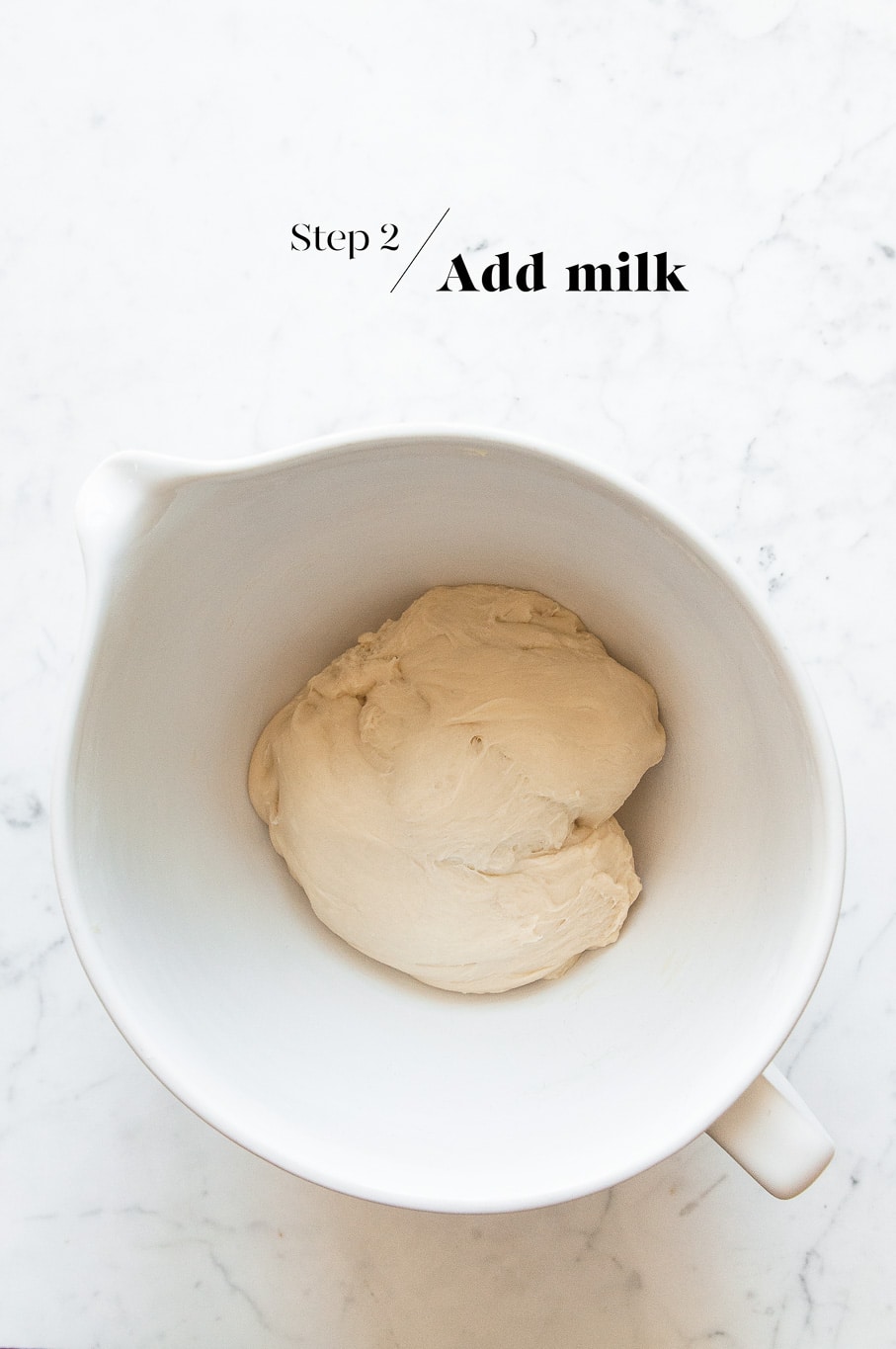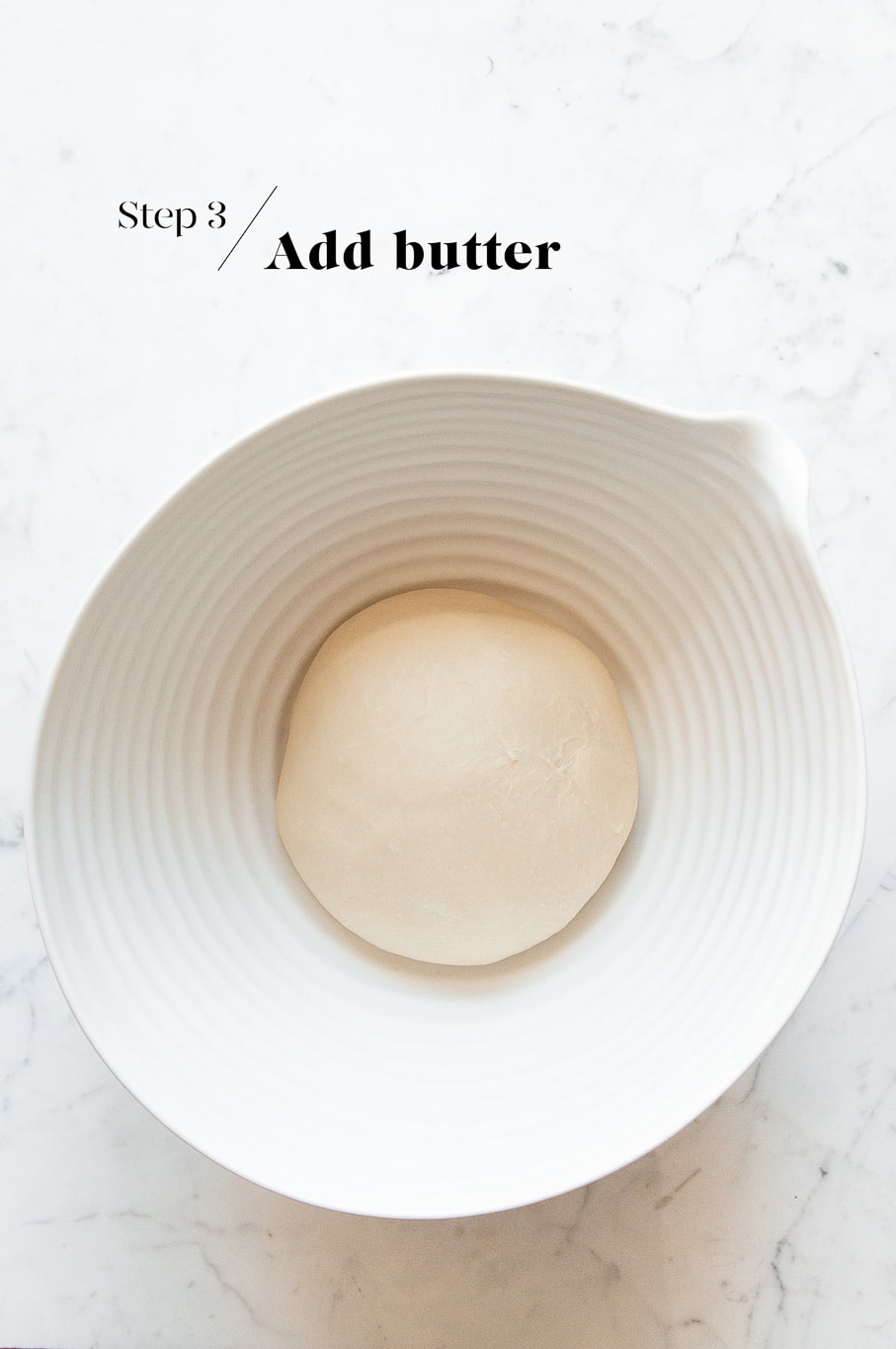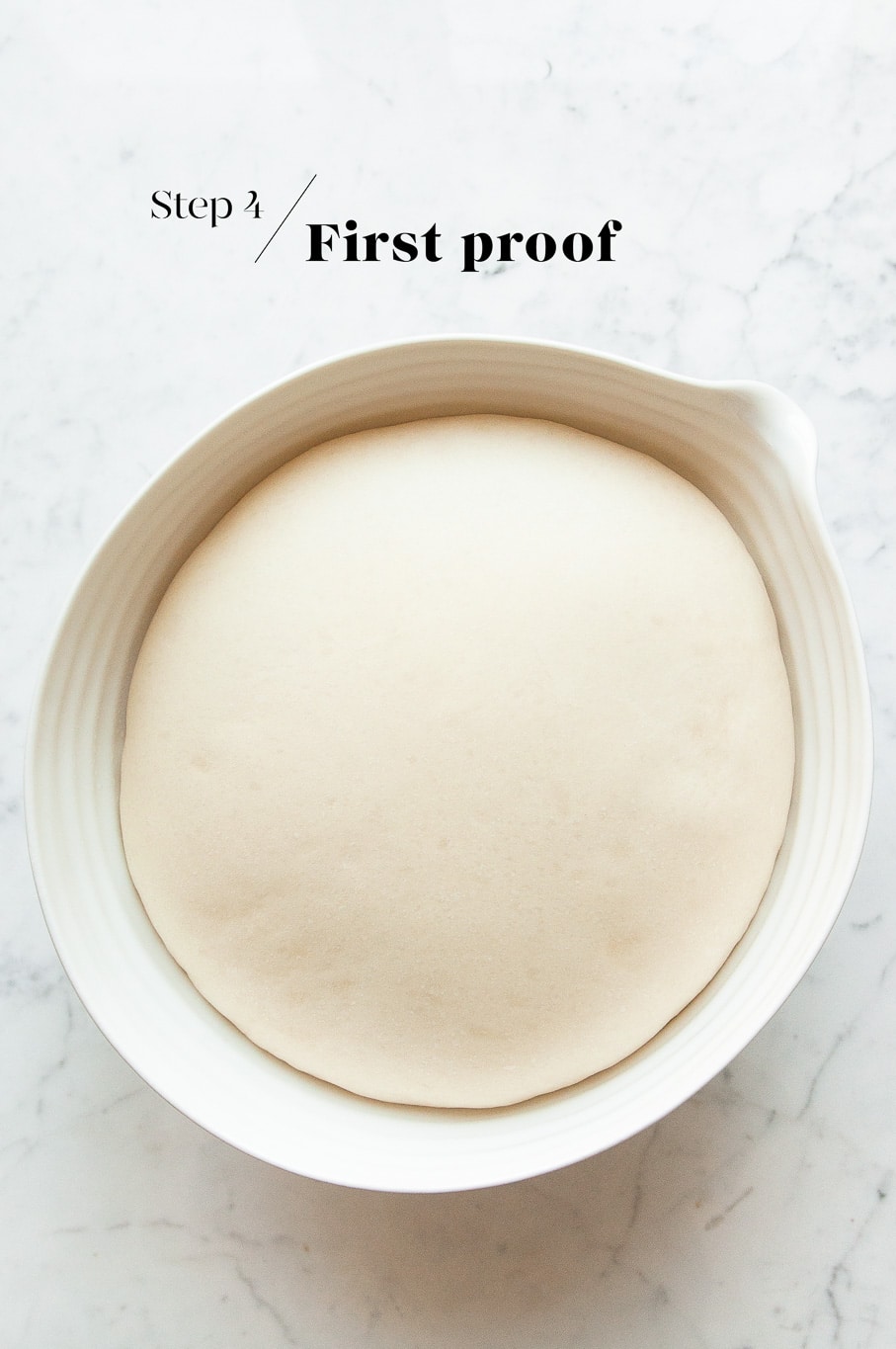Soft and deliciously fragrant Cardamom Buns which will fill your home with the aroma of a Danish bakery! Recipe with step-by-step photos.

Cardamom Buns
I am a big fan of Scandinavian design, but perhaps an even bigger fan of Scandinavian baking. We are fortunate to be able to travel to Denmark and Sweden regularly, and my favourite pastime when we are there is to visit all of my favourite cafés and bakeries, plus any new ones that have popped up since our previous visit. High on the agenda is to squeeze in as many Cinnamon Buns and Cardamom Buns each day at breakfast!

What are Cardamom Buns?
Cardamom Buns are often sold alongside Swedish Cinnamon Buns, and they are usually shaped differently so you can tell them apart. The main difference is that they are heady with freshly-ground cardamom which has a slightly peppery taste and a beautiful floral aroma.
Cardamom can be an acquired taste for some, but the advantage of making homemade Cardamom Buns is that you can add as much, or as little, cardamom as you like (I like to use a lot!).
I have heard that Cardamom Buns are more for adults, that kids in Sweden and Denmark usually prefer Cinnamon Buns. But my kids happen to love these Cardamom Buns as much as I do, and they will eat them with the maximum amount of cardamom that the recipe below calls for.


Cardamom Pods vs Cardamom Seeds
If you have ever tasted a fresh cardamom bun from a bakery in Sweden or Denmark, you will usually notice the distinct fragrance of cardamom right away, evidenced by the flecks of freshly-ground cardamom on top of the buns. They look like coarsely ground black pepper, but they are in fact ground cardamom seeds.
When making cardamom buns, I recommend using whole cardamom seeds which have already been extracted from the cardamom pods (also called decorticated cardamom seeds). If you can’t find cardamom seeds, you can remove the seeds from the cardamom pods themselves by pounding them open with a pestle and mortar. However, this process can be quite fiddly and time-consuming.
The cardamom seeds themselves are too large and coarse to use right away, so you will need to grind them coarsely, either with a pestle and mortar or an electric spice grinder. Some Danish households even have a dedicated spice grinder for cardamom seeds, a tip which I have adopted since I use freshly-ground cardamom seeds quite regularly.
If you are out of luck and can’t find neither cardamom pods nor cardamom seeds, you can use ground cardamom which is more readily available. However, store-bought ground cardamom is nowhere near as fragrant and punchy as freshly ground cardamom – you will smell and taste the difference right away.
If you opt to use store-bought ground cardamom in this recipe, I recommend adding an extra 1-2 teaspoons to increase the cardamom flavour.

Cardamom Bun Recipe
My Cardamom Bun recipe is similar to my recipe for Swedish Cinnamon Buns, as well as my other recipes which use an enriched dough, such as Finger Buns, Cream Buns, Cinnamon Rolls, etc.
It is an easy and reliable dough recipe which produces soft and fluffy buns each time.
How to Make Cardamom Buns
Step 1
Measure the flour, sugar, yeast and salt into the bowl of an electric stand mixer. Lightly mix the ingredients together.
Step 2
Add the egg to the bowl. Slowly add the warm milk (you may not need all of it), and lightly beat everything with the dough hook until it comes together into a large ball of dough. Only add as much milk as you need to bring the ingredients together into a dough.


Step 3
Slowly incorporate the butter, one tablespoon at a time, until all of the butter has been used.
Then increase the speed to medium and continue kneading with the dough hook for 15 to 20 minutes, or until the dough is smooth and elastic.
Step 4
Lightly oil a large mixing bowl, and place the dough into the bowl. Cover the bowl with a clean tea towel and leave it somewhere warm for 1 to 1.5 hours, or until the dough has doubled in size.


Step 5
Once the dough has doubled in size, punch it back and knead it gently into a smooth ball.
Roll out the dough into a rectangle shape measuring approximately 50 x 40 cm/20 x 16 inches.
Step 6
Make the filling by beating together the ingredients. Use a small palette knife to evenly spread the filling over one half of the dough.


Step 7
Fold the dough over in half. You should have a rectangular shape measuring approximately 50 x 20 cm/20 x 8 inches.
Step 8
Cut the dough into thin strips measuring 1 cm/0.5 inch wide. You should have about 16 strips, but this will depend on how wide you rolled your dough. Each strip will produce one bun.


Step 9
Shape the Cardamom Buns as follows:
- Take one strip of dough.
- Gently wrap the dough around four fingers on one hand.
- As you come to the end of the strip of dough, gently loosen the wrapped dough from your fingers.
- Bring the end of the strip of dough across the middle of the bun, and then tuck it in securely underneath.
Once you have shaped a few buns, you will get a feel for when you should start to finish and secure the buns.
Try to work quickly as the dough will start to puff up slightly as it sits, making it a bit more difficult to work with.

Step 10
Place the shaped dough on a sheet pan lined with baking paper. Space them apart generously. Set the pan aside somewhere warm until the buns have puffed up slightly. The timing will depend on how warm your room is (about 30-60 minutes). It is important that the room is not too warm, otherwise the butter from the filling will melt.
Meanwhile, preheat the oven to 200°C/390°F with a metal baking tray on the middle shelf.
Step 11
Brush the buns with egg wash, and sprinkle generously with the cardamom sugar topping.


Step 12
Bake the buns for about 20 minutes, or until the buns are lightly golden. Check the buns at about 10 minutes, and if they are browning too quickly, cover them with a loose sheet of foil for the rest of the baking time.
The buns are cooked if an internal thermometer reads 85°C (185°F). Gently remove the buns (intact) to a wire rack, and leave them to cool completely.

Tips for Making Cardamom Buns
- The longer the strips of dough, the more “layers” of cardamom sugar you will have in the bun, which will also make the buns look nicer.
- In order to prevent the butter in the filling from melting and leaking during baking, it is important to do the second proofing in a warm, but not too warm, environment. That is, it needs to be warm enough to encourage the buns to rise, but not so warm that the butter in the filling will melt.
- As the buns are traditionally baked spaced apart, they will not be soft and fluffy on the outside of the bun.
- To make the buns as soft as possible, I like to bake them until they are just slightly golden, before covering them with foil for the rest of the baking time.
- Some butter (but not a lot) will leak and melt during baking, and this is normal. The melted butter and sugar will pool a little under each bun, and caramelise during baking. You can break off the caramelised bits or leave them on the buns.
Where to Buy Cardamom Buns
If you are travelling to Copenhagen or Stockholm, I highly recommend visiting the following places for a good cup of coffee and some pastries, including Cardamom Buns:
Juno the Bakery, Copenhagen
Andersen & Maillard, Copenhagen
Lille Bakery, Copenhagen
Hart Bageri, Copenhagen
Fabrique, Stockholm (also in London and New York)
Bageri Petrus, Stockholm
Café Pascal, Stockholm
Lillebrors Bageri, Stockholm
PrintCardamom Buns

- Resting Time: 2 hours
- Author: Thanh | Eat, Little Bird
- Prep Time: 60 mins
- Cook Time: 20 mins
- Total Time: 1 hour 20 minutes
- Yield: Makes about 16 buns
- Category: Bread
- Method: Oven
- Cuisine: Scandinavian
Soft and deliciously fragrant Cardamom Buns which will fill your home with the aroma of a Danish bakery! Recipe with step-by-step photos.
Ingredients
For the Dough
- 600 g (4 cups) strong white bread flour
- 110 g (1/2 cup) caster sugar
- 1 teaspoon fine salt
- 14 g instant dried yeast (see Kitchen Notes below)
- 375 ml (1 1/2 cup) milk, warmed to 37°C/98°F
- 60 g (4 tablespoons) unsalted butter, softened
For the Cardamom-Sugar Filling
- 100 g (1 stick) unsalted butter, softened
- 110 g (1/2 cup) granulated sugar
- 2–4 teaspoons freshly ground cardamom seeds (see Kitchen Notes below)
- 1/4 teaspoon fine salt
For the Topping
- 1 egg, lightly beaten with a splash of water
- 3 tablespoons granulated sugar
- 2–4 teaspoons freshly ground cardamom seeds (see Kitchen Notes below)
Instructions
You will need approx. 3 hours to make the Swedish Cinnamon Buns
To Make the Dough
- Measure the flour, sugar, salt and yeast into the bowl of an electric stand mixer.
- Lightly mix the ingredients together using the dough hook.
- Add the egg to the bowl.
- Slowly pour in the warm milk, and continue mixing until everything comes together into a rough dough.
- Add the butter, one tablespoon at a time. Once the butter has been fully incorporated into the dough, add the next tablespoon of butter.
- Once all of the butter has been added, continue kneading the dough on medium speed for about 15 to 20 minutes.
- The dough is ready when it is soft and smooth, and no longer sticks to the side of the bowl. The dough will be somewhat sticky from the butter and egg.
First Proofing Period
- Lightly oil a large mixing bowl.
- Place the dough inside the bowl.
- Cover the dough with a clean tea towel, plastic wrap, or a reusable bowl cover.
- Leave the dough somewhere warm for 1 to 1.5 hours, or until the dough has doubled in size (see Kitchen Notes below).
For the Cinnamon Filling
- Just before the dough has finished the first proofing period, make the filling by beating together the ingredients.
To Roll out the Dough
- Once the dough has doubled in size, punch back the dough to release all of the air.
- Gently knead the dough a few times.
- Roll out the dough into a rectangle shape measuring approximately 40 x 30 cm/16 x 12 inches.
- Use a small palette knife to evenly spread the filling all over the dough.
- Fold over one-third of the dough towards the centre, and overlap with the other third of the dough.
- Use a rolling pin to gently flatten the dough and smooth out any air bubbles. Aim to have a rectangle shape measuring approximately 30 x 15 cm/12 x 6 inches.
- Cut the dough into strips measuring 2 cm/0.75 inches wide. How many strips you cut will depend on how wide you have rolled your dough, but you should get about 12-15 strips.
To Shape the Cinnamon Buns
- Take one strip of dough and twist it gently with both hands, slightly stretching the dough as you do so.
- For right-handers: start wrapping the twisted dough around three of your fingers in your left hand.
- Finish the knot by tucking the end of the dough into the centre of the bun on top. Please see diagram in blog post.
Second Proofing Period
- Line a large baking pan with baking paper.
- Arrange the shaped buns on the lined baking pan. Space the buns apart generously.
- Place the pan somewhere warm for about 30 minutes, or until the buns have risen and puffed up slightly.
- During this time, preheat the oven to 200°C/390°F (without fan) with a metal baking tray on the middle shelf.
Bake the Cinnamon Buns
- Gently brush each bun with some egg wash.
- Sprinkle each bun with pearl sugar.
- Place the pan of buns on the preheated baking tray.
- Bake the buns for about 20 minutes, or until the buns are lightly golden. Check the buns at about 10 minutes, and if they are browning too quickly, cover them with a loose sheet of foil for the rest of the baking time.
- The buns are cooked if an internal thermometer reads 85°C/185°F.
- Gently remove the buns to a wire rack, and leave them to cool completely.
Kitchen Notes
 WHAT TYPE OF CARDAMOM TO USE
WHAT TYPE OF CARDAMOM TO USE
* For the best (and most authentic) results, use freshly-ground cardamom seeds (also called decorticated cardamom seeds). Simply grind them to a fine powder to use in the dough and filling. Use a more coarse grind for sprinkling on top of the wreath.
* Alternatively, use the same quantity of regular ground cardamom, or add more to taste.
 MAKE AHEAD TIPS
MAKE AHEAD TIPS
To make the Cardamom Buns the night before:
* Make the dough as per the recipe until it has doubled in size. Without deflating the dough, place it in the fridge to continue proving overnight. The next day, proceed with the rest of the recipe.
 DIFFERENT TYPES OF FLOUR
DIFFERENT TYPES OF FLOUR
* For Swiss readers: I use Zopfmehl (or farine pour tresse) when making bread and enriched dough.
 DIFFERENT TYPES OF YEAST
DIFFERENT TYPES OF YEAST
* Please note that there is a difference between instant yeast (also called instant dried yeast or fast-action dried yeast) and dried yeast (also called active dry yeast). If you are not sure what type of yeast you have, please check the packaging for instructions on how to use the yeast.
* With instant yeast, you can add it directly to the flour mixture without having to activate it first.
* With dried yeast, you will need to activate it first (usually in some warm liquid).
 PROOFING THE DOUGH
PROOFING THE DOUGH
Dough needs a warm environment for the yeast to activate and cause the dough to rise. If you don’t have a warm place in your home, try one of the following ideas:
* In the oven with the oven light switched on (works only for some ovens).
* In the oven with a tray of boiling water on the bottom shelf.
* In the oven or a steamer oven at a low temperature of about 25-40°C (77-104°F).
 OVEN TEMPERATURES
OVEN TEMPERATURES
All recipes on this website state temperatures for a regular oven (i.e. a conventional oven without fan). If you have a convection oven with a fan, please consult the manufacturer’s handbook on how to adjust the temperature and baking time accordingly.
 CONVERSIONS
CONVERSIONS
To convert from cups to grams, and vice-versa, please see this handy Conversion Chart for Basic Ingredients.
The post Cardamom Buns appeared first on Eat, Little Bird.
